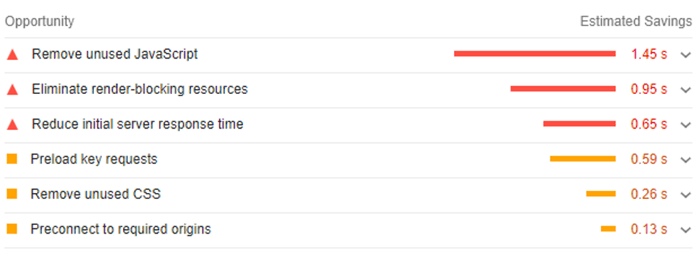Though the announcement first came back in May 2020, Google has recently expanded on the details of their upcoming algorithm change that more heavily accounts for page experience signals.
In the November 2020 announcement, Google explained how they would be incorporating new Core Web Vitals with the existing search signals: mobile-friendliness, safe-browsing, HTTPS-security, and intrusive interstitial guidelines.
These new Core Web Vitals that webmasters should be taking into consideration over the next six months leading up to the algorithm change are:
- Loading: Largest Contentful Paint (LCP)
- Interactivity: First Input Delay (FID)
- Visual Stability: Cumulative Layout Shift (CLS)
In layman’s terms these signals measure how fast the page loads, its responsiveness, and whether it makes any major layout shifts that might disrupt the user’s experience.
Page function and form go hand in hand.
All in all, Google is continuing to prioritize how the website functions just as much as what it says to create the most optimized experience for the user. There’s no point in having the best content if the means by which a user accesses it is flawed.
Along with the more technical insight for webmaster, Google also announced they would be labeling results on the SERPs that abide by these signals to give users knowledge before they click on whether the page is optimized:
Visual indicators on the results are another way to do the same, and we are working on one that identifies pages that have met all of the page experience criteria.
(Source: Google)
So while you may have the right content and keywords for Google to rank you highly, if your pages lack usability, users will be warned.
What is there to do about all of these changes?
It’s not something that should come as much of a surprise. Google provides tools like Lighthouse and PageSpeed Insights for webmasters to start analyzing their site’s performance. These tools give users insight into how their site is performing, including:
- Accessibility
- SEO
- Best practices
- Mobile & desktop data
You can run your own Lighthouse audit by right clicking on your webpage > Insect (or hit CTRL + Shift + i) and selecting “Lighthouse” from the ‘>>’ menu option.
The tool will run an audit of your site and provide you with opportunities and estimated savings based on resolving these issues, as seen below.

It’s not often that Google gives such advanced warning of an algorithm change and lays out so clearly what factors will affect the changes.
Perhaps with the tumultuousness of 2020 Google is considering how these changes may affect a business and want to provide a bit of lead time for webmasters to update their sites. Or perhaps this algorithm will be bigger than we have seen in recent years and they are giving advance notice so as not to pull the rug out from under us in 6 months’ time.
Either way, the information is out there and it’s time to act by beginning to understand where your website is lacking and making updates before May 2021.
If you need help with your technical SEO or website experience, let’s talk. Our team of experts can perform web audits to determine what you should be optimizing before the update in May. Set up a time to talk with us about your needs by reaching out today.
